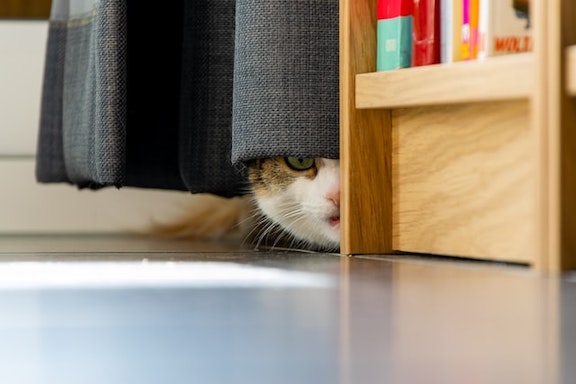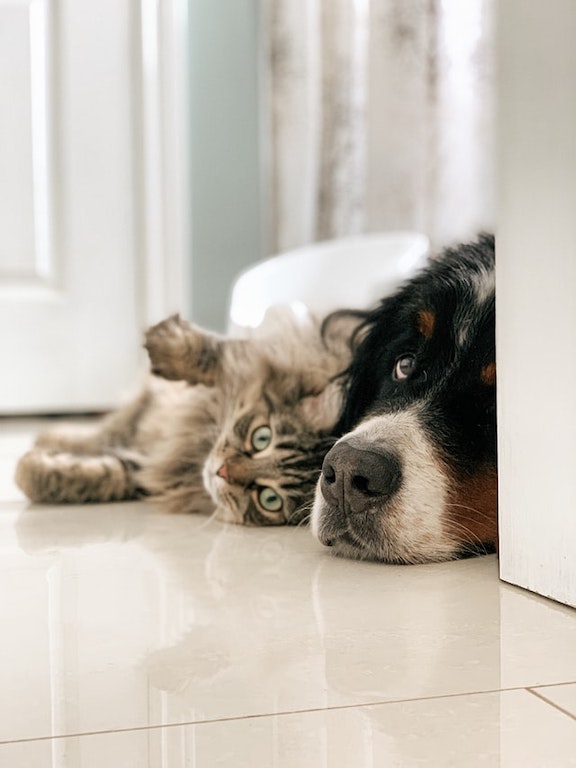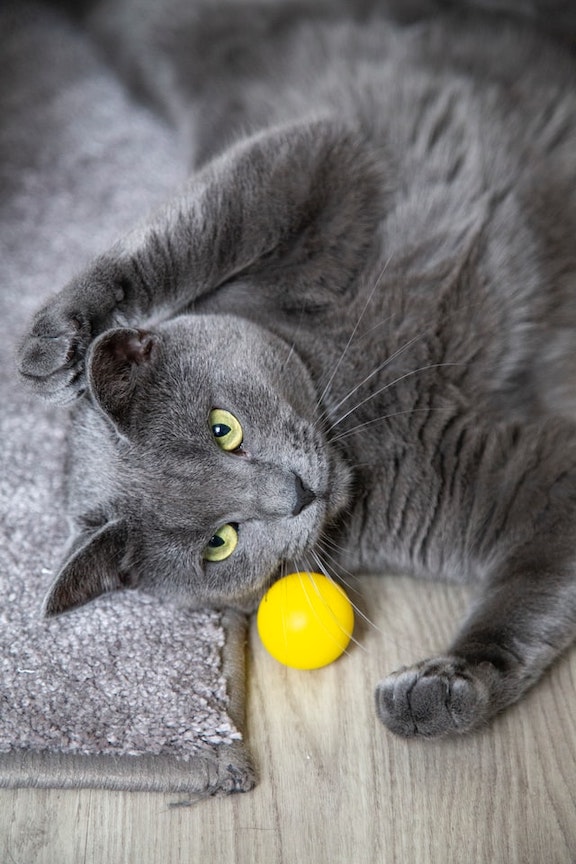6 Tips for Adopting an Adult Cat
Posted: 11/06/2023 | BY: Erin Cain | Categories: Uncategorized
Many potential cat parents will walk into a shelter or rescue planning to adopt a kitten. That’s understandable — kittens are adorable, funny, mischievous and playful. But before you settle on a kitten, consider adopting an adult or senior cat instead. An older cat has so much love to give and joy to provide to her cat parents. Additionally, adult cats are typically calmer, already litter trained and have clearly established personalities. In other words, you have a much better idea about what kind of cat you are adopting. Best of all, you will earn the affection of a vulnerable adult cat who needs a stable home and loving attention. Here are 6 tips for adopting an adult cat, so you can bring your new furkid home and help her settle in quickly and safely.

1. Provide space and hiding spaces.
Your new cat will need time to adjust to her new home, so it’s best to provide her with space in a separate room where she can settle in on her own schedule. Have food and water available, along with a clean litter box. Adding a cat tree or scratching post is a plus because cats Confine her to this area for about a week, making sure that you spend time with her in the room every day. The more she gets comfortable with you, the less likely she is to experience continued stress.
After a week, if the cat seems to have settled in, open the door to the room and let her explore her new territory. Don’t be surprised if the cat hides for some time, and be sure to provide hiding locations or cubbies for her to stay in until she becomes confident in her surroundings or when she needs some alone time.
2. Consider the cat’s food needs.
If you are adopting your adult cat from a rescue or shelter, ask about the type of food they have been feeding her. For the first week or so, feed the cat the food she has become accustomed to at the shelter before slowly transitioning her onto a new brand of food.
Don’t be surprised or alarmed if the cat doesn’t eat much or at all for the first day or two in her new home. In the meantime, make sure the cat has plenty of fresh water and that it is changed frequently. If the cat is still not eating after a few days, contact your veterinarian for advice.

3. Introduce other pets slowly and carefully.
Cats are territorial and naturally defensive, so introducing a new cat to a home with other pets requires patience and may take significant amounts of time. Appropriately slow introductions with other pets are a necessity to prevent aggressive or fearful behavior. Always introduce your new addition to your established pets gradually, and understand that sometimes, even with the best of introductions, some pets will never become best friends or cuddle buddies. They can, however, learn to live comfortably with each other. The Humane Society of the United States has excellent advice for introducing a new pet to your family’s other pets.
4. Create a consistent routine.
One of the best ways to make your new adult cat comfortable is to establish a consistent routine, especially with feeding, bonding time, and medicines. Without a routine they can depend on, cats will act ill and experience sickness such as vomiting, not using the litter box, or refusing to eat. Set up a schedule where your cat is fed in the same place and at the same time every day. Apply the same consistency to the time when you can play with or snuggle with your cat. Keep it consistent, and your cat will destress quickly.

5. Make play an everyday bonding activity.
The fastest way to bond with an adult cat is by playing with her each day. If your new cat is shy or not comfortable being too close to you at first, consider using a wand toy to engage her attention and hunting instincts. Sit down on the floor while playing with the wand, then sit quietly for a while; let the cat come to you when she is ready. Catnip rarely fails, so have some handy and spread it on the floor near you. Your cat will relax and learn to associate that feeling with your presence.
6. Purchase a pet insurance policy.
The average cost of emergency care for cats and dogs is between $800 and $1,500. Let your new cat know that you’ll have her covered no matter what and purchase a pet insurance policy for her. A pet insurance policy can help cover emergency care for your cat, saving you money and preventing additional stress. Get a free, personalized pet insurance quote for your new cat today.
Get ready for the purrs and biscuits!
Above all, be patient with your adopted adult cat. Once she has time to adjust and make your house her home, she will let you know when she’s ready for scratches and cuddles. In no time, your cat will be purring and making biscuits (kneading) to let your whole family know that now everything in sight belongs to her.
References:
- University of Illinois College of Veterinary Medicine. (2017). Safe Spaces for Cats: Pillar 1 of a Healthy Environment. Retrieved from https://vetmed.illinois.edu/safe-spaces-cats/
- The Humane Society of the United States. (2021). Introducing your new cat to other pets. Retrieved from https://www.humanesociety.org/resources/introducing-pets
- Ohio State University. (2011). Ohio State study: Even healthy cats act sick when their routine is disrupted. Retrieved from https://news.osu.edu/ohio-state-study-even-healthy-cats-act-sick-when-their-routine-is-disrupted/
- Arnold, B. (2020). 15 Fun Ways to Bond with Your Cat. Retrieved from https://catingtonpost.com/15-fun-ways-to-bond-with-your-cat/
- Reinicke, C. (2018). Are you prepared for a pet emergency? Most Americans are not. Retrieved from https://www.cnbc.com/2018/06/14/are-you-prepared-for-a-pet-emergency-most-americans-are-not.html
Disclaimer
The information contained on this blog is intended for informational and educational purposes only and should not be construed as medical advice. It is not a substitute for professional veterinary care. Always consult with your veterinarian before making any changes to your pet's health care or treatment plan.
The authors of this blog are not veterinarians and do not claim to be experts in pet health. The information provided here is based on our own experiences and research, as well as information from reputable sources. However, we cannot guarantee the accuracy or completeness of this information.
We encourage you to do your own research and consult with your veterinarian before making any decisions about your pet's health.
Compare top pet insurance providers plans.
Enter your dog’s age in years and months to calculate their age equivalent to human years.
Calculate your dog’s ageEnter your cat’s age in years and months to calculate their age equivalent to human years.
Calculate your cat’s age